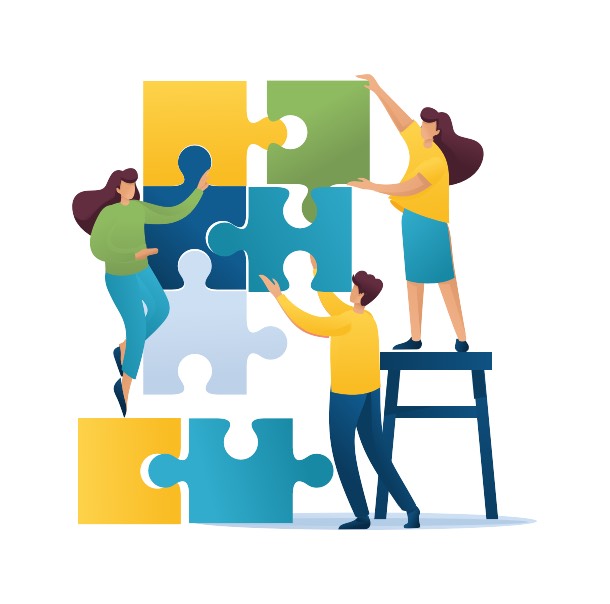The Complete Nonprofit Strategic Planning Guide

When you think of a great strategic planner, do you picture a frail, elderly woman trudging through the slums?
Someone has said that strategic leadership is about cause and effect on a grand scale, especially in a fluid and unpredictable environment.
Mother Teresa led strategically in the most fluid, unpredictable environs imaginable—Calcutta’s dangerous, disease-ridden slums.
In addition to her transformational leadership skills, she was known for her iconic humanitarian work, winning the Nobel Peace Prize, the U.S. Medal of Freedom, the Congressional Gold Medal and more.
Despite having no business training or experience in nonprofits, Mother Teresa devised a simple—but brilliant—strategic plan that guided her Missionaries of Charity to worldwide recognition—and, in the process, inspired thousands of people worldwide to serve the marginalized.
What was her plan?
Mother Teresa’s greatest strength was a relentless focus on her core mission: helping the poorest of the poor. As her work grew and resources began to come in, she opened hospices, leper colonies, and orphanages; always treating all who came with dignity. Effective nonprofit strategic planning requires developing careful plans of action based on the available resources and personnel to achieve a goal. Mother Teresa did this to perfection and provided the rest of us with a shining example.
What Is a Strategic Plan for a Nonprofit?
Regardless of size—from a neighborhood food bank to an international relief organization—every nonprofit needs to set priorities, focus resources, and ensure that staff and donors are working toward common goals.
I generally start the strategic planning process for nonprofits by identifying the group’s existing strengths and weaknesses, as well as external opportunities and threats. This is often done through a variety of “perspective gathering” tools. Next, we collaboratively identify where the organization should be headed. Once we have that vision, then we determine clear action steps that will best enable it to advance its mission.
Working with your leadership and staff, we jointly develop a plan that the entire team agrees on. When it’s approved, we prioritize the steps, commit to measurable goals, and begin implementing the plan.
By committing to long-range interaction with the nonprofit, I return to revisit the strategy on an ongoing basis as the internal and external environments change.

The Six Components of a Nonprofit Strategic Plan
I’ve had a long career in coaching and consulting many nonprofit organizations of all sizes—locally and nationally. I seek to help each organization reach the next level by guiding them across six vital phases:
- Phase 1: Perspective – Where Are We Now? We begin by defining current realities. “Perspective before planning” is how successful nonprofits make brilliant informed decisions.
- Phase 2: Core Plan – Where Are We Headed? Equipped with proper context, a nonprofit can now develop a living core strategic plan based on a set of shared fundamental beliefs upon which to develop this plan.
- Phase 3: Action – What’s Important Now? Time to move on key issues as one cross-functional group. The team-developed core plan is the basis for creating a unified action plan aligned with the master plan.
- Phase 4: Structure – What Form Best Facilitates the Plan? With the action plan in place, I help ensure that your organizational structure, culture, systems, processes, and staffing all support the plan.
- Phase 5: Management – How Are We Doing? As a nonprofit strategy guide, I help implement a systematic feedback loop to manage plan implementation. Regular monthly and quarterly reviews are instituted.
- Phase 6: Renewal – What Needs to Change? Team leadership meets annually to review and renew the core strategic plan. Action items, opportunities, trends, objectives, and goals are all reset for the coming year.
Example of a Nonprofit Strategic Plan That Works
There’s a reason why large, prestigious nonprofits don’t just “wing it” or try to operate without a strategic plan in place. Large groups like the American Red Cross and the Make-a-Wish Foundation rely on good planning. Huge nonprofits like United Way and Salvation Army rely on the skills and expertise of outside consultants to ask the right questions about their organizations, programs, and initiatives.
Consider this well-known group and how they rely on planning: The Boys & Girls Clubs of America are a familiar sight in many communities. Today, more than 5,000 Club locations serve 3.6 million young people through Club membership and community outreach. Their stated goal is “to enable all young people, especially those who need us most, to reach their full potential as productive, caring, responsible citizens.”
Great goal, but how best to reach it?
One thing’s for sure—they’ve had plenty of experience! 2006 marked the centennial year of Boys & Girls Clubs, as they celebrated 100 years of providing hope and opportunity to young people across the country.
At first glance, you might think a well-funded nonprofit with a 118-year track record could get by without a professionally developed, written strategic plan—quite the opposite. About four years ago, they rolled out a comprehensive 5-year strategic plan called Great Futures 2025.
This over-arching, nationally implemented plan for the Boys & Girls Club Movement was intentionally developed to increase the group’s collective success locally and corporately. Still in use, Great Futures 2025 provides a strategic direction that aligns the individual locations around a set of shared purposes, priorities, and goals, while enabling Club organizations to directly meet the needs of the youth they serve within the model best suited for their communities.
It’s a brilliant concept and well worth emulating. The driving purpose of Great Futures 2025 was “to inspire and empower Club youth to achieve success and champion opportunities for all young people in America.”
That broad strategic plan was implemented through four strategic priorities, which provide a unified direction to fulfill their overall purpose:
- Increase Program Quality
- Strengthen Organizations
- Advocate for Youth Development
- Reach More Youth
Please note—each of the four initiatives was backed up by the detailed steps needed to enact them. I love that their 5-year plan was targeted and trackable. Rather than just list vague objectives, the plan’s written goals were “doable and definable.” For instance, one major objective focused on delivering better outcomes for the youth they served—more specifically, to increase the collective percentage of members reporting an optimal Club experience to 75 percent by 2025. That’s specific!
Your organization may or may not interact with millions of people like the Boys & Girls Club of America, but any size nonprofit can develop similar “doable and definable” goals—and find practical ways to reach them.

Work with a Nonprofit Strategic Consultant
It’s estimated that half of all nonprofit leaders spend less than one day a month focusing on strategy. That’s short-sighted. Having a strategic plan will enable and encourage your team to concentrate on energizing donors and volunteers while achieving measurable goals.
Personally, I’ve found great fulfillment in helping nonprofit organizations with mission and vision alignment, stakeholder engagement, goal setting, and performance monitoring. I’ve worked with the Nationwide Children’s Hospital of Columbus, Ohio, and St. Mary’s Healthcare in Grand Rapids. Also here in Michigan, I’ve coached the regional leaders at the Susan G. Komen Breast Cancer Foundation. In addition, I’ve worked with national nonprofits including The Salvation Army.
Regardless of size, any nonprofit can formulate and implement a strategic plan that’s focused, realistic, and responsive to the needs of its teams, contributors, and the communities they serve.
Let’s Get Started
Those closest to her said that Mother Teresa could influence people to transcend their personal interests for the sake of the group. I count it a privilege and blessing to be able to influence and improve the trajectory of nonprofit organizations. If you’re interested in discussing the strategic needs of your nonprofit, let’s connect soon for a relaxed, informal conversation.
